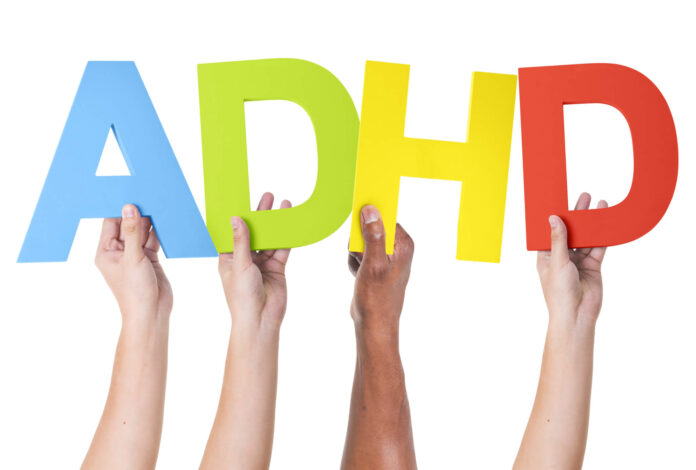Introduction:
Attention-deficit/hyperactivity disorder (ADHD) is a neurodevelopmental disorder characterized by difficulties with attention, hyperactivity, and impulsivity. While ADHD is commonly associated with children, it can persist into adolescence and adulthood, impacting various aspects of daily functioning and quality of life. In this article, we delve into the complex neural pathways involved in ADHD, exploring how alterations in brain structure and function contribute to the symptoms and challenges associated with the disorder.
Neurobiology of ADHD:
The neurobiology of ADHD involves intricate interactions between various regions of the brain responsible for attention, executive function, and impulse control. Key areas implicated in ADHD include the prefrontal cortex, basal ganglia, and neurotransmitter systems such as dopamine and norepinephrine. Dysfunction in these brain regions and neurotransmitter systems can disrupt the regulation of attention, behavior, and cognitive processes, leading to the core symptoms of ADHD.
Prefrontal Cortex:
The prefrontal cortex (PFC) plays a crucial role in executive functions such as attention, working memory, decision-making, and impulse control. Individuals with ADHD often exhibit reduced activation and connectivity in the PFC, impairing their ability to sustain attention, inhibit inappropriate responses, and regulate behavior effectively. Dysfunction in the PFC contributes to difficulties with organization, planning, time management, and goal-directed behavior commonly observed in individuals with ADHD.
Basal Ganglia:
The basal ganglia are a group of structures located deep within the brain that play a critical role in motor control, reward processing, and learning. Dysfunction in the basal ganglia circuitry has been implicated in the hyperactive and impulsive symptoms of ADHD. Alterations in dopamine signaling within the basal ganglia may disrupt the balance between inhibition and activation, leading to difficulties with motor restlessness, impulsivity, and reward sensitivity characteristic of ADHD.
Dopamine and Norepinephrine:
Dopamine and norepinephrine are neurotransmitters that play key roles in regulating attention, arousal, and motivation. Dysregulation of dopamine and norepinephrine signaling pathways has been implicated in the pathophysiology of ADHD. Reduced dopamine levels or impaired dopamine receptor function in the PFC may contribute to deficits in attention and executive function, while dysregulated norepinephrine signaling in the locus coeruleus may affect arousal, alertness, and response inhibition.
Structural and Functional Imaging Studies:
Advances in neuroimaging techniques have provided insights into the structural and functional abnormalities associated with ADHD. Structural imaging studies have identified differences in brain volume, cortical thickness, and white matter integrity in regions implicated in ADHD, such as the PFC, basal ganglia, and cerebellum. Functional imaging studies have revealed alterations in brain activation patterns and connectivity during tasks requiring attention, inhibition, and cognitive control in individuals with ADHD.
Genetic and Environmental Factors:
ADHD is a complex and heterogeneous disorder with both genetic and environmental influences. Family and twin studies have demonstrated a strong genetic component to ADHD, with heritability estimates ranging from 70% to 90%. Common genetic variants associated with ADHD include genes involved in dopamine signaling, synaptic function, and neurotransmitter transport. Additionally, environmental factors such as prenatal exposure to tobacco, alcohol, or maternal stress, as well as early childhood adversity, may increase the risk of developing ADHD.
Developmental Trajectories:
ADHD is not a static condition but rather a dynamic disorder with diverse developmental trajectories. While some individuals may outgrow their symptoms or learn to compensate for their difficulties over time, others may experience persistent impairment into adolescence and adulthood. Factors such as comorbid psychiatric conditions, socioeconomic status, access to treatment, and environmental supports can influence the long-term outcomes of individuals with ADHD.
Implications for Treatment:
Understanding the neurobiology of ADHD has important implications for treatment and intervention strategies. Pharmacological treatments such as stimulant medications (e.g., methylphenidate, amphetamine) and non-stimulant medications (e.g., atomoxetine, guanfacine) target neurotransmitter systems implicated in ADHD, helping to improve attention, impulse control, and behavioral regulation. Behavioral interventions such as cognitive-behavioral therapy (CBT), parent training, and classroom accommodations can also complement pharmacotherapy by addressing specific skill deficits and behavioral challenges associated with ADHD.
Conclusion:
ADHD is a complex neurodevelopmental disorder characterized by alterations in brain structure and function that affect attention, executive function, and impulse control. Dysfunction in key brain regions such as the prefrontal cortex and basal ganglia, as well as dysregulation of dopamine and norepinephrine signaling pathways, contributes to the core symptoms of ADHD. Advances in neuroimaging, genetics, and developmental research have deepened our understanding of the neurobiology of ADHD, paving the way for targeted treatments and interventions that address the underlying neural mechanisms of the disorder. By decoding the brain’s pathways involved in ADHD, we can better support individuals affected by the condition and optimize their outcomes across the lifespan.


